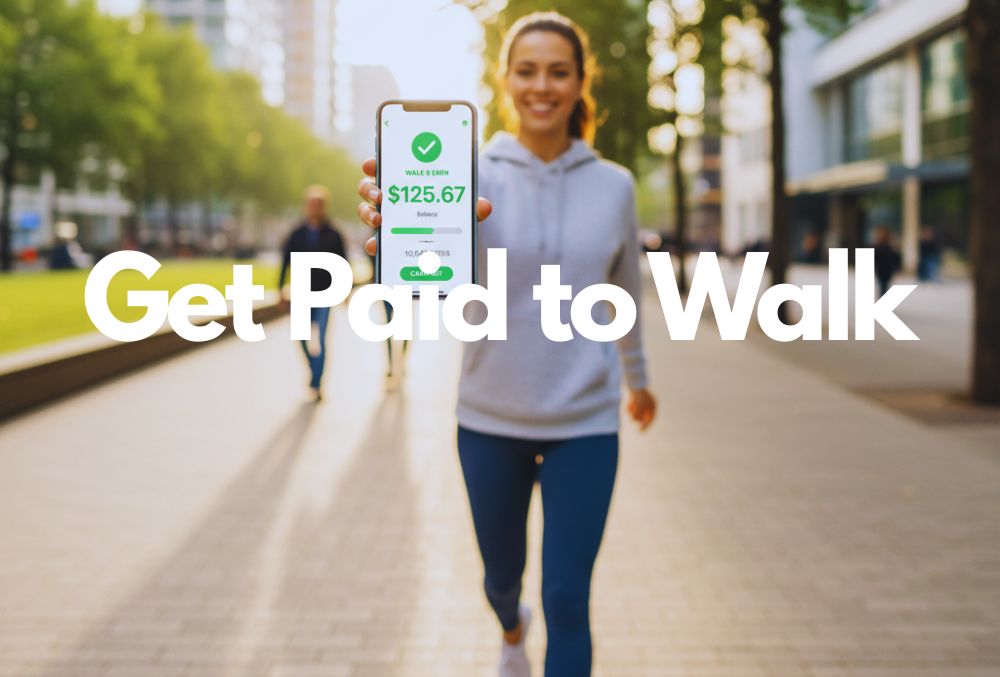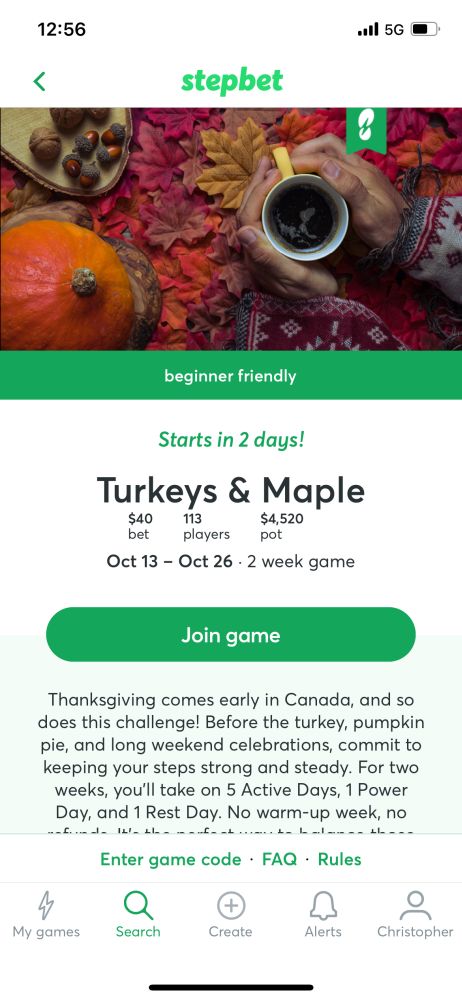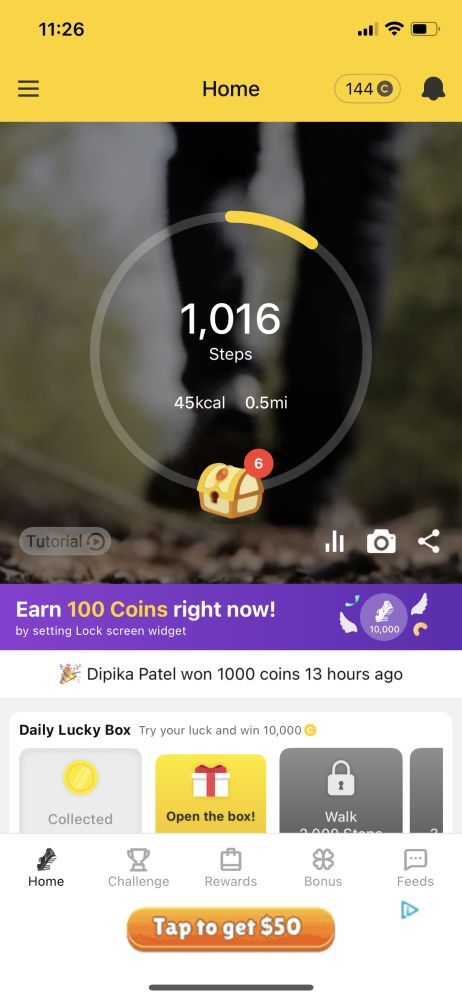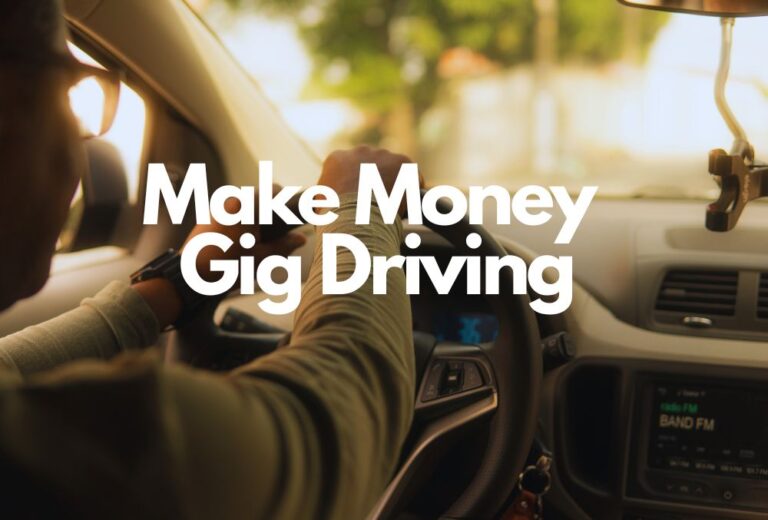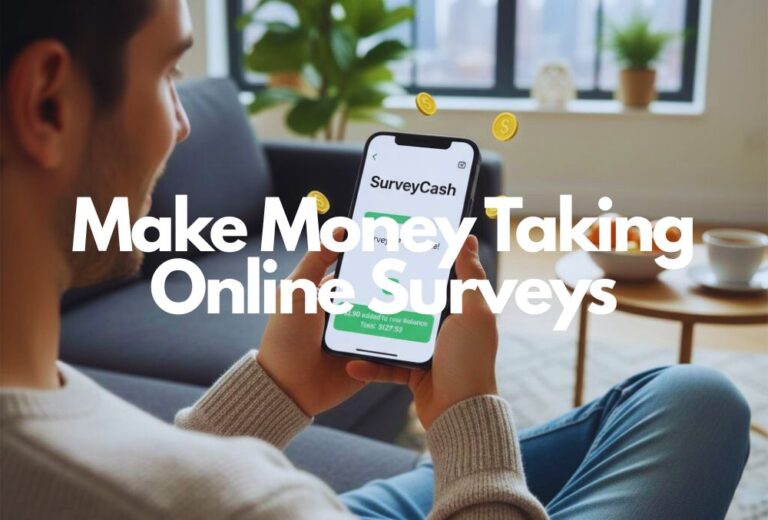19 Best Apps That Pay You to Walk for Free – Beginners Guide
Look, I’ll be honest with you—when I first heard about apps that literally pay you money just for walking, I thought it was too good to be true. But the truth is, it is legit, and if you like to walk, it could be a potential source of income for you.
Apps like Sweetcoin, WeWard, Runtopia, CashWalk, and many others will pay you with gift cards, in-store credit, products, and cash for the steps you take. These apps work with advertising partners like fitness brands to health insurance companies and pay you based on the steps you take, tracked through your smartphone.
In this guide, I’m breaking down the 20 best apps that pay you to walk for free. No gimmicks, no hidden subscriptions (well, mostly), and definitely no complicated schemes. Just straightforward ways to earn money walking from your apps while you’re living your normal life.
How Do Walking Rewards Apps Actually Work?
Before we dive into the good stuff, let’s talk about how these apps that pay you to walk actually function. Because understanding the “why” makes the whole thing feel less sketchy and more like the legitimate opportunity it is.
Most walking apps use your smartphone’s built-in accelerometer or GPS to track your movement. You know that thing in your phone that knows when you’re holding it upright or sideways? Same technology. Some apps sync with fitness trackers like Fitbit or Apple Watch, but here’s the great news: you don’t need any special devices. Your phone is enough.
Here’s how the business model works: These apps partner with advertisers, health insurance companies, fitness brands, and retailers who want access to health-conscious consumers (that’s you).
In exchange for your attention—watching a sponsored ad, taking a survey, or browsing their marketplace—they share a portion of their revenue with you. Some apps also sell anonymized health data to research companies, although this practice varies by platform and always requires your explicit consent.
Below are a couple of apps I’m using right now that track my steps and data. What’s interesting to me is that they are accurate right down to the steps; however, payouts vary by the amount of coins you earn per app.
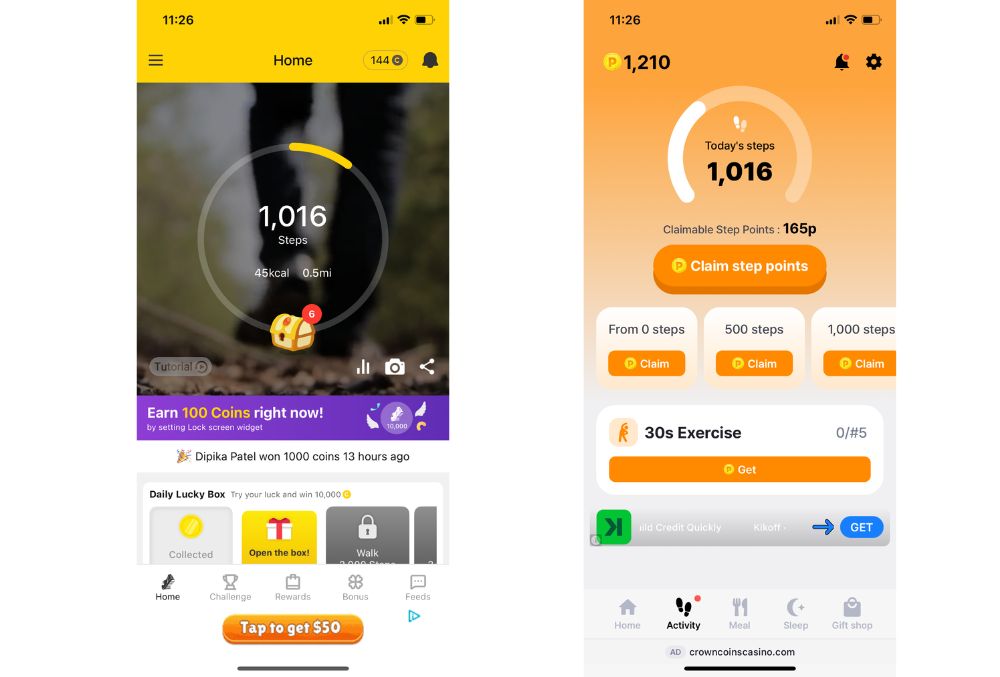
The tracking itself is pretty seamless. Once you download the app and permit it to access your phone’s motion sensors, it runs quietly in the background, counting your steps. Most apps track outdoor steps more accurately than treadmill walking, although technology is continually improving at recognizing all movement types.
Do you need any special devices to use step-reward apps? Nope. While some apps offer bonus features if you connect a smartwatch or fitness tracker, your smartphone alone is perfectly adequate for earning rewards. I’ve been using several of these apps for months with just my iPhone, and they work like a charm.
The Real Talk: How Much Can You Actually Earn?
Let’s manage expectations here. You’re not going to quit your day job and retire to Bali on walking app earnings. But can you make some decent side cash? Absolutely.
Most casual users earn somewhere between $10 to $50 per month using a single app. If you’re strategic and use multiple apps simultaneously (yes, you can double-dip—more on that later), you could potentially earn $100 to $200 monthly. The highest earners—people who walk a lot for work, live in walkable cities, or are just fitness enthusiasts—report making $300+ per month by stacking multiple apps and hitting all their bonuses.
How much can you realistically earn per month using these apps? It depends on three factors: how much you walk (obviously), which apps you use, and how engaged you are with challenges and bonuses. Someone walking 10,000 steps daily across three apps could expect $75-150 monthly.
A less active person doing 5,000 steps might see $30-60. Not life-changing money, but definitely enough for a nice dinner out or to cover your streaming subscriptions.
The payout methods vary, too. Some apps offer direct PayPal cash, others provide gift cards to places like Amazon, Starbucks, or Target, and a few let you donate earnings to charity. There’s usually a minimum payout threshold—typically anywhere from $5 to $25—before you can cash out.
The 19 Best Free Apps That Pay You to Walk in 2025
Alright, enough preamble. Let’s get to what you actually came here for: the apps that are going to turn your steps into money. I’ve organized these from most popular and highest-earning to niche options that might fit specific situations.
1. Sweatcoin: The OG of Walking Rewards Apps
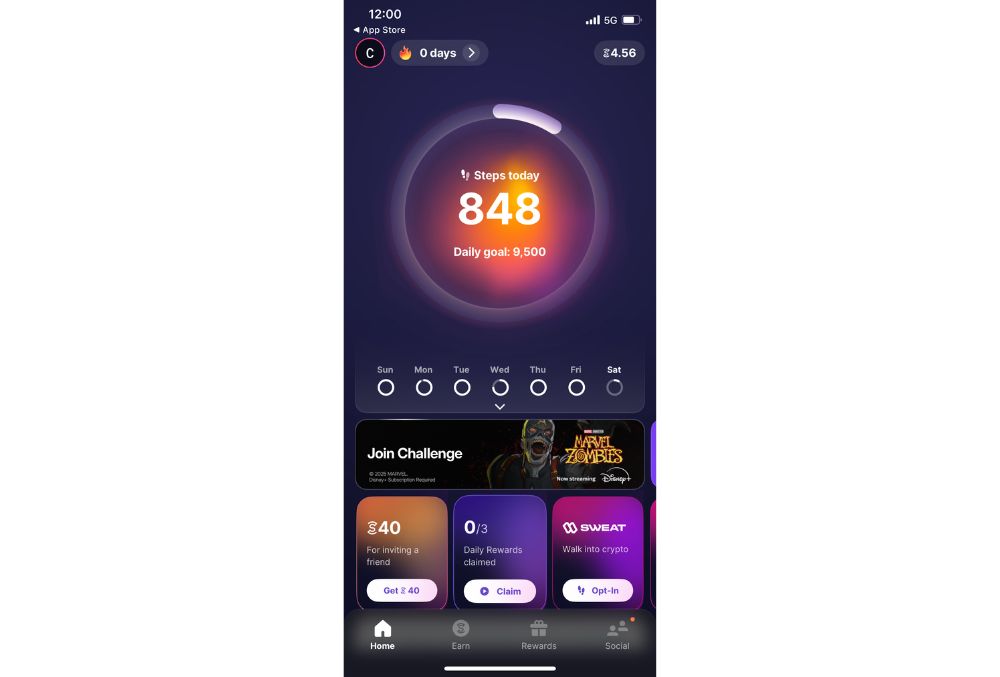
Sweatcoin is basically the grandmother of the get-paid-to-walk movement—and she’s still going strong. This app converts your outdoor steps into digital currency called “Sweatcoins” which you can redeem in their extensive marketplace for products, services, and some gift cards.
The lowdown: For every 1,000 outdoor steps, you earn about 0.95 Sweatcoins (they take a small commission). The marketplace features everything from fitness gear and gadgets to PayPal cash (though cash options are limited). What sets Sweatcoin apart is the variety—I’ve seen offers for magazine subscriptions, workout programs, electronics, and even vacation packages.
The catch? It only tracks outdoor steps using GPS, so your treadmill walking doesn’t count. But if you’re someone who walks outside regularly, Sweatcoin is a no-brainer first download.
Available on: iOS and Android
Best for: People who primarily walk outdoors and like having lots of redemption options
2. WeWard: The Gamified Cash Machine
WeWard brings a treasure-hunt vibe to walking apps, and honestly, it’s kind of addictive. You earn “Wards” for your steps, but the real magic happens with their location-based challenges, where you can unlock bonus rewards by visiting specific spots in your area.
The lowdown: This app converts steps into actual cash, gift cards, or charitable donations, with some users reporting earnings of $100+ annually. The gamification keeps things interesting—there are daily challenges, achievement badges, and a social component where you can compare progress with friends.
What I love about WeWard is the flexibility. Whether you want cold, hard PayPal cash, an Amazon gift card, or to donate to charity, they’ve got you covered. The treasure-hunt challenges are legitimately fun, turning your neighborhood walk into a mini adventure.
Available on: iOS and Android
Best for: People who want cash payouts and enjoy gamified experiences
3. StepBet: Betting on Yourself (Literally)
StepBet flips the script by having you wager money on your own ability to hit step goals. Meet your targets, and you split the pot with other winners. Fail, and you lose your stake.
Below is a more beginner-friendly game to start with. The pot on this one is up to $4520. If you won, you would get your $40 back plus split the winnings from everyone who lost.
The lowdown: You join step challenges that last 4-6 weeks, putting up anywhere from $40 to several hundred dollars. The app analyzes your historical activity and sets personalized step goals. If you hit every target, you get your money back plus a share of the winnings from people who didn’t make it. Most winners earn 10-30% profit on their initial investment.
This isn’t for everyone—you need to be confident in your commitment and have money you can afford to risk. But if you’re competitive and need accountability, the financial stakes work like magic. I have a friend who says StepBet is the only thing that got her walking through winter because she refused to lose her money.
Available on: iOS and Android
Best for: Competitive people who need financial motivation to stay consistent
4. Runtopia: For the Overachievers
Runtopia rewards you with “Sports Coins” for both walking and running, which you can redeem for actual cash via PayPal, products, or coaching services. It’s like having a personal trainer app that also pays you.
The lowdown: The app tracks all your cardio activities—walking, running, cycling—and the more intense your workout, the more coins you earn. They’ve got audio coaching during runs, social features to connect with other fitness enthusiasts, and a decent rewards catalog.
The redemption rates are better than many competitors, and they frequently run bonus events where you can earn multipliers. If you’re someone who does more than just casual walking—maybe you’re training for a 5K or just like to pick up the pace sometimes—Runtopia rewards that hustle.
Available on: iOS and Android
Best for: Active people who run or cycle in addition to walking
5. Charity Miles: Walking for a Cause
Charity Miles is an app that lets you choose from over 40 charities, and corporate sponsors donate money for every mile you walk, run, or bike.
The lowdown: You earn approximately $0.25 per mile for walking and $0.10 per mile for biking. The money goes directly to your chosen charity—ranging from Habitat for Humanity to animal welfare organizations to medical research foundations. You’re not getting paid personally, but you’re turning your daily movement into a genuine charitable impact.
I’ll be real: if you need the money yourself, this isn’t the right app for you. But if you’re doing okay financially and want to feel good about your morning walk, knowing that every step is feeding shelter animals or funding cancer research adds a whole different dimension to your workout.
Available on: iOS and Android
Best for: People who want to turn their movement into charitable giving
6. CashWalk: Simple, Straightforward, Effective
CashWalk is refreshingly uncomplicated. Walk. Earn coins. Redeem for Amazon gift cards or other rewards. No complicated schemes, no betting, just a straightforward transaction of steps for money.
The lowdown: You earn one coin per 100 steps, and there are occasional mini-games or ad-watching opportunities to boost earnings. The interface is clean and user-friendly, making it perfect for people who don’t want a complicated app experience.
The only minor annoyance is that you need to manually open the app daily to record your steps—it doesn’t track entirely automatically. But honestly, this takes about 5 seconds and helps you stay mindful of your daily progress. Amazon gift cards start at $5, which is achievable within a few weeks of regular walking.
Available on: iOS and Android
Best for: People who want simplicity and Amazon gift cards
7. Growfitter: The Wellness Ecosystem
Growfitter is huge in certain markets (especially India) and focuses on comprehensive wellness rather than just steps. You can earn cash, Amazon gift cards, gym memberships, or health insurance discounts for staying active.
The lowdown: Beyond walking, Growfitter rewards other healthy behaviors like cycling, swimming, and even meditation. The app partners with health insurance companies and wellness brands, so the rewards can be surprisingly valuable—think discounted gym memberships or health screening vouchers.
The earning potential is solid if you’re consistently active across multiple fitness dimensions. It’s less about casual walking and more about overall health engagement, which might appeal to people taking a holistic approach to wellness.
Available on: Android (primarily)
Best for: People wanting comprehensive wellness rewards beyond just walking
8. Step Set Go: India’s Walking App Champion
Step Set Go is probably your best bet for earning Paytm and Amazon vouchers. The app has localized perfectly for the Indian market with rewards that make sense for that economy.
The lowdown: Daily active challenges keep engagement high, and the earning rates are competitive within the Indian market. The app converts steps into coins, which can be redeemed for various vouchers, with Paytm being particularly popular.
The community features are strong, and there’s a social gaming element that makes walking feel more like a shared activity. If you’re outside India, this probably isn’t your first choice, but if you’re in the region, it’s definitely worth downloading.
Available on: iOS and Android
Best for: Users in India wanting localized rewards
9. Evidation: The Research-Based Earner
Evidation takes a different approach: it connects with over 20 health and fitness apps you might already use—Apple Health, Fitbit, MyFitnessPal, Strava, etc.—and rewards you for the data.
The lowdown: You earn points for tracked activities, and every 10,000 points equals $10 deposited directly to your PayPal or bank account. The app also offers occasional surveys and research studies that can boost earnings significantly.
What’s cool about Evidation is that it’s powered by real health research. Your anonymized data contributes to actual medical studies, so there’s a bit of a “contributing to science” feel. The earning rate isn’t the fastest—most people cash out every 3-6 months—but it’s completely passive since it works with apps you’re already using.
Available on: iOS and Android
Best for: People already using multiple fitness apps who want passive earnings
10. LifeCoin: The Lifestyle Rewards Platform
LifeCoin positions itself as more than just a walking app—it’s a lifestyle rewards platform. Steps earn you LifeCoins redeemable for gift cards, electronics, fitness gear, or even gadgets.
The lowdown: The rewards catalog is impressive, featuring legitimate products from recognizable brands. Earning rates are decent, and they run frequent bonus events where you can multiply your earnings. The app has a clean interface and reliable tracking.
One thing to note: the higher-value rewards require significant coin accumulation, so patience is key. But if you’re someone who walks consistently and doesn’t need immediate payouts, the product rewards can be genuinely appealing—I’ve seen people redeem for things like wireless earbuds or fitness watches.
Available on: iOS and Android
Best for: People who want product rewards rather than cash/gift cards
11. Winwalk: Android’s Simple Solution
Winwalk keeps things wonderfully simple: you earn coins for every 100 steps, then redeem them for gift cards from major retailers.
The lowdown: The app is lightweight, doesn’t drain battery excessively, and gets straight to the point. No complicated gamification, no challenges—just steps converted to coins converted to gift cards. Amazon, Target, Starbucks, and other popular retailers are available.
The earning rate is modest but consistent. Most users cash out for a $5 gift card every few weeks, which might not sound like much until you remember you’re literally just walking around living your life. It’s free money for something you’d do anyway.
Available on: Android and iOS
Best for: Android users wanting straightforward rewards
12. PK Rewards: The Heart Rate Hunter
PK Rewards takes a different angle by focusing on workout intensity rather than just steps. You need a heart rate monitor (either a fitness watch or chest strap) to maximize earnings.
The lowdown: The app tracks your “PK Points” based on time spent in different heart rate zones. Higher intensity workouts earn more points, which you can redeem for gift cards. This approach rewards actual fitness effort rather than just movement.
If you’re serious about fitness and already use a heart rate monitor, PK Rewards adds a nice earning layer to your training. But if you’re just a casual walker without extra devices, this isn’t your optimal choice.
Available on: Android only
Best for: Android users with heart rate monitors who do intense workouts
13. Fit For Bucks: Local Rewards Gold
Fit For Bucks offers something unique: free local rewards. We’re talking complimentary coffee at local cafés, discounted massages, free fitness classes, and other community-based perks.
The lowdown: Instead of cash or generic gift cards, you earn “Bucks” redeemable at participating local businesses. The specific offerings vary dramatically based on your location—major cities have way more options than small towns—but when it works, it’s fantastic.
The community-building aspect is real. You’re supporting local businesses while getting healthier, which feels good on multiple levels. Plus, there’s something satisfying about walking into a coffee shop and getting a free latte because you hit your step goals.
Available on: iOS and Android
Best for: iPhone users in cities with good local business partnerships
14. Macadam: The New Kid Getting It Right
Macadam is relatively new to the scene but has quickly gained traction by offering multiple earning methods: steps, surveys, challenges, and mini-games. You can redeem for cash via PayPal or donate to a charity.
The lowdown: The app feels fresh and modern with a slick interface. Earning rates are competitive, and they’re clearly trying to differentiate by offering diverse earning opportunities beyond just walking. The survey integration means you can boost earnings during downtime.
Being newer, there’s some uncertainty about long-term sustainability, but the current user reviews are positive. If you’re the type who likes being an early adopter, Macadam is worth checking out before everyone else discovers it.
Available on: iOS and Android
Best for: People wanting diverse earning methods beyond just walking
15. PaidTogo: The Mileage Tracker
PaidTogo focuses on distance rather than steps, tracking your walking, running, or cycling mileage and paying accordingly. There’s a free version and a premium subscription option.
The lowdown: Top users on the premium plan can earn up to $75 monthly, which is impressive. However, the free version has earning caps that limit your potential. The app is reliable and the tracking is accurate, but you need to evaluate whether the subscription cost justifies the increased earning potential.
For serious walkers or runners logging significant daily mileage, the math might work out. Casual users should probably stick with the free version and manage expectations accordingly.
Available on: iOS and Android
Best for: High-mileage walkers/runners willing to consider a subscription
16. HealthyWage: Betting Big on Weight Loss
HealthyWage isn’t technically a walking app—it’s a weight loss betting platform—but it belongs on this list because many people use walking as their primary strategy for losing weight.
The lowdown: You bet money that you’ll lose a specific amount of weight within a certain timeframe. If you succeed, you get your money back plus a substantial prize (often 2-3x your wager). If you fail, you lose your stake.
The potential earnings dwarf most walking apps. People regularly win hundreds or even thousands of dollars. But the risk is proportionally higher, and you need legitimate weight loss goals. This isn’t for earning beer money—it’s for people serious about transformation who want major financial motivation.
Available on: iOS and Android
Best for: People with weight loss goals wanting a major financial incentive
17. DietBet: The Gentler Weight Loss Wager
DietBet is similar to HealthyWage but with smaller stakes and payouts. You typically bet $25-$ 35 that you’ll lose 4% of your body weight in 4 weeks, and the winners split the pot.
The lowdown: The lower entry point makes DietBet more accessible, and the community support aspect is strong—you’re competing and collaborating with others in your “game.” Most winners earn modest profits ($30-$ 100), but it’s more about accountability than making a fortune.
If StepBet and HealthyWage feel too intense but you like the competition concept, DietBet hits a nice middle ground. And again, many participants use increased walking as their primary weight loss strategy.
Available on: iOS and Android
Best for: People wanting lower-stakes weight loss competition
18. Rover: Walking Dogs for Actual Money
Rover isn’t a “get paid to walk” app in the traditional sense. It’s a dog-walking marketplace where you connect with pet owners who need their dogs walked. But you know what? You’re still walking and getting paid, except instead of pennies, you’re earning $15-30 per walk.
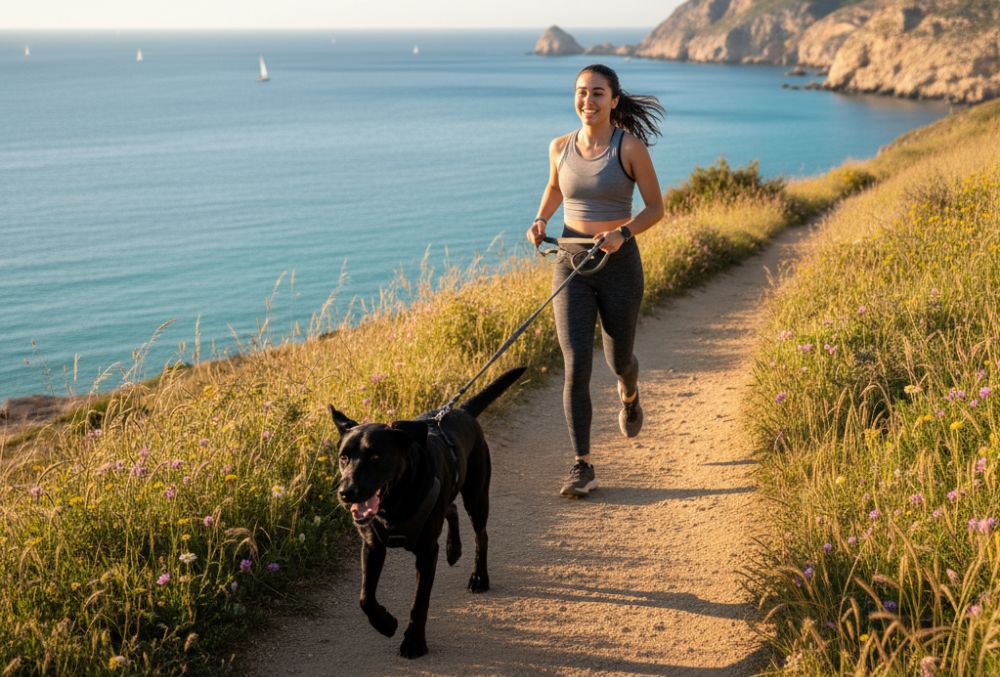
The lowdown: This is actual side hustle territory. You set your own rates, choose which clients to accept, and walk adorable dogs while making legitimate money. The earning potential far exceeds any step-tracking app—people regularly make $500-1000+ monthly.
The trade-off is that this requires more effort. You’re providing a service, dealing with scheduling, and assuming responsibility for someone’s pet. But if you love dogs and want your walking to generate real income, Rover transforms your fitness routine into a genuine money-maker.
Available on: iOS and Android
Best for: Dog lovers wanting a substantial side income
19. DoorDash/Instacart/Shipt: The Gig Economy Approach
Similar to Rover, delivery apps aren’t traditional step-trackers, but they absolutely pay you to walk—or at least to move around a lot. Delivery drivers spend significant time walking through stores, apartment complexes, and neighborhoods.
- DoorDash – Deliver food within walking distance.
- Instacart – Deliver groceries within a short walk from your house
- Shipt – Deliver packages within a short walk from your home
The lowdown: Earning potential is substantial ($15-25 per hour is typical), and you’re in control of when you work. The physical activity level varies—some deliveries involve lots of walking, others mostly driving—but you’re definitely moving more than you would sitting on your couch.
The downside is that this is actual work, not passive earning. You’re competing with other drivers, dealing with customers, and managing time efficiently. But if you need legitimate income and don’t mind combining it with physical activity, these gig platforms pay far better than any step-tracking app ever will.
Available on: iOS and Android
Best for: People wanting serious side income who don’t mind active work
Which Walking Apps Offer Cash vs. Points or Rewards?
Let’s break this down clearly because the payout structure really matters when choosing which apps to use.
Cash Apps (PayPal, direct deposit, or bank transfer):
- WeWard
- Evidation
- Runtopia
- Macadam
- PaidTogo
- StepBet (if you win)
- HealthyWage/DietBet (if you win)
Gift Card Apps (Amazon, Starbucks, Target, etc.):
- CashWalk
- Winwalk
- Growfitter
- LifeCoin
- PK Rewards
In-Store Credit Apps:
- myWalgreens Health Goals
Product/Marketplace Apps:
- Sweatcoin
- LifeCoin
Charity Apps:
- Charity Miles
- Macadam (offers both cash and charity options)
Service Apps (earn money by providing a service):
- Rover
- DoorDash/Instacart/Shipt
My recommendation? Download at least one from each category to maximize flexibility. Sometimes you want cash, sometimes a Starbucks gift card sounds perfect, and sometimes supporting your local animal shelter feels right.
Can You Use Multiple Walking Apps at Once?
Can you use more than one walking app at the same time to maximize earnings? Absolutely, yes—and you definitely should.
Here’s the beautiful thing: all these apps are tracking the same steps. Your phone counts your movement regardless of how many apps are running, so why not get paid multiple times for the same activity? It’s not cheating; it’s being smart.
I personally run four apps simultaneously: Sweatcoin for marketplace rewards, WeWard for cash, CashWalk for Amazon gift cards, and Evidation connected to my other health apps. My 10,000 daily steps earn rewards across all four platforms, effectively quadrupling my earning rate.
The practical considerations:
- Battery drain: Multiple GPS-based apps can drain your battery faster. Solution? Keep location permissions on “While Using” rather than “Always” for most apps, and charge your phone during your lunch break.
- Storage space: These apps are generally small, but they add up. Clean out old photos or unused apps to make room.
- Notification overload: You’ll get alerts from multiple apps celebrating your milestones. Just turn off non-essential notifications and keep only the important ones.
- Time investment: Most apps require just a daily check-in (literally 30 seconds). Even managing four or five apps takes under 5 minutes daily.
The earning multiplier effect is real. One app might net you $30 monthly. Four apps running simultaneously could bring in $100-150. That’s the difference between “nice bonus” and “actually meaningful income.”
Are These Apps Available Worldwide?
Are these apps available worldwide or only in certain regions? The answer varies significantly by app, and this is something you need to check before getting too excited about any particular platform.
Widely Available Apps (most countries):
- Sweatcoin
- StepBet
- Evidation
- HealthyWage
- Rover (in countries where launched)
Primarily US-Based:
- myWalgreens Health Goals
- Fit For Bucks
- Many apps offer Amazon US gift cards
Region-Specific Apps:
- Step Set Go (primarily India)
- Growfitter (India-focused)
- WeWard (started in France, expanding but still limited)
UK and Europe:
- WeWard
- Sweatcoin
- Various localized options are not covered here
The frustrating reality is that many of the highest-earning apps have geographic restrictions due to payment processing limitations, partnership availability, and regulatory complexity. PayPal payouts typically have the widest availability, while gift cards are often region-locked.
My advice: Don’t assume availability. Check your local app store, read the reviews from people in your country, and verify the payout options before investing time. There’s nothing worse than accumulating points only to discover you can’t actually redeem them where you live.
Understanding Minimum Payout Thresholds
Is there a minimum payout threshold for walking apps? Yes, and understanding these thresholds helps you choose the right apps and set realistic expectations.
Here’s a breakdown of common minimum payouts:
| App | Minimum Payout | Typical Time to Reach |
|---|---|---|
| WeWard | $5 | 2-4 weeks |
| Evidation | $10 | 3-6 months |
| CashWalk | $5 Amazon card | 2-3 weeks |
| Sweatcoin | Varies by reward | Varies widely |
| Winwalk | $5 gift card | 3-4 weeks |
| myWalgreens | $1 store credit | 1-2 weeks |
| Runtopia | $5 | 3-4 weeks |
| StepBet | N/A (game-based) | 4-6 weeks per game |
The lower the minimum payout, the more frequently you’ll see rewards, which provides better psychological reinforcement. Apps with $25+ minimums feel like they take forever, which can be demotivating.
However, don’t let minimum thresholds be your only decision factor. An app with a $10 minimum that pays well might get you there faster than an app with a $5 minimum but terrible earning rates.
How Do Apps Track Steps and Activity?
How do paid-to-walk apps track my steps or activity? The technical answer involves accelerometers, gyroscopes, GPS, and algorithms, but let me translate that into human.
Your smartphone contains sensors that detect motion and orientation. The accelerometer measures acceleration forces, allowing the phone to determine whether you’re moving and how intensely. The gyroscope tracks rotation and orientation. Together, these sensors can distinguish walking from driving, sitting, or other activities.
GPS-based tracking (used by apps like Sweatcoin) is more accurate for outdoor movement but drains battery faster and doesn’t work indoors or on treadmills. These apps literally track your location to verify you’re moving through space.
Accelerometer-based tracking (used by most apps) works anywhere—indoors, outdoors, treadmills—and is much more battery-efficient. The trade-off is slightly less accuracy and potential for “gaming” the system (shaking your phone, for instance, though most apps have fraud detection).
Fitness tracker integration (Apple Watch, Fitbit, Garmin) provides the most accurate tracking because these devices are optimized specifically for activity monitoring. If you already own one, definitely connect it to your earning apps.
Most apps update your step count periodically rather than constantly, which saves battery. You might walk 500 steps and see nothing change in the app, then suddenly it jumps by 2,000 steps when it syncs. This is normal.
Privacy consideration: Yes, these apps are tracking your movement, which some people find uncomfortable. Read the privacy policies, understand what data is collected and how it’s used, and make informed decisions. Most apps anonymize data and are transparent about their practices, but you should verify this yourself.
Do Walking Apps Really Pay Real Money?
Do walking apps really pay you real money or gift cards? I’ve been using these apps for months, specifically to answer this question with personal experience, and the answer is an unequivocal yes—with caveats.
I’ve personally cashed out from multiple apps:
- WeWard: $47 to PayPal over 5 months
- CashWalk: Three $5 Amazon gift cards over 4 months
- Evidation: $20 to PayPal after 7 months
- Sweatcoin: Redeemed for a $15 value fitness product
That’s $92 in cash/gift cards plus a product, earned from steps I would have taken regardless. I didn’t change my lifestyle, buy anything, or go out of my way. I just walked normally and opened a few apps daily.
The payments are real and legitimate. PayPal deposits hit my account within 48 hours. Gift cards arrived via email within 24 hours. Sweatcoin’s product shipped and arrived as promised.
The “but” you’ve been waiting for: These apps aren’t going to replace your income. They’re supplementary earnings—beer money, as the Reddit crowd calls it. You’re earning cents per thousand steps, not dollars. The magic happens through consistency over months and stacking multiple apps simultaneously.
Think of it like this: Would you bend down to pick up a quarter on the sidewalk? Most people would. Walking apps are like having quarters constantly appear on your path. Sure, any individual quarter isn’t life-changing, but pick up 10 quarters daily for a year and you’ve got $912.50. That’s a vacation, a new phone, or a significant chunk of your holiday shopping.
Maximizing Your Walking App Earnings
How to increase earnings with walking apps: Let me share some strategies that dramatically boosted my monthly returns.
1. Stack Multiple Apps Simultaneously
I’ve beaten this drum already, but it’s worth repeating: run 3-5 apps at once. Your earnings multiply without any additional effort. This single strategy increased my monthly earnings from $30 to $120.
2. Hit Daily Bonuses and Challenges
Most apps offer bonus rewards for consistent daily logins or completing specific challenges. These bonuses often pay 2-5x more than regular steps. I set phone reminders to open each app during my morning coffee—takes 3 minutes total and ensures I never miss bonus opportunities.
3. Use Referral Codes
Many apps pay referral bonuses when friends join using your code. WeWard gave me $5 for each friend who joined. If you’ve got a fitness-minded social circle, sharing referral codes creates a nice passive income stream. (And hey, you’re genuinely helping friends discover these apps, so everyone wins.)
4. Participate in Seasonal Events
Apps frequently run limited-time events with multiplied earnings—holiday challenges, seasonal competitions, special partnerships. Mark your calendar and prioritize participation during these periods. I earned 3x my normal Sweatcoin rate during a summer challenge last year.
5. Connect Multiple Devices
If you have both a smartphone and a fitness tracker, connect them both where possible. Some apps give bonuses for device connectivity, and the tracking accuracy improves, potentially earning you credit for steps that might otherwise go uncounted.
6. Walk More (Obviously)
Revolutionary advice, I know. But seriously, being more intentional about walking—parking farther away, taking stairs, doing walking meetings—compounds your earnings. An extra 2,000 steps daily (about 15 minutes of walking) might increase monthly earnings by $15-30 across multiple apps.
7. Check for Special Offers
Apps regularly feature boosted redemption values or limited-time products. CashWalk occasionally offers Amazon cards at 20% discount. Sweatcoin features “hot deals” with better value. Checking the apps regularly ensures you don’t miss these opportunities.
Common Pitfalls to Avoid
After months of using these apps, I’ve made mistakes and learned from them. Here’s what not to do:
Don’t try to game the system. Shaking your phone, strapping it to your dog, or putting it on a ceiling fan might seem clever, but apps have fraud detection algorithms. Get caught and you’ll be banned, losing all accumulated earnings. Not worth it.
Don’t ignore the redemption deadlines. Some apps have expiration dates on earned points or coins. Sweatcoin coins don’t expire, but some others do. Know the rules for each app and set calendar reminders before your hard-earned rewards vanish.
Don’t download suspicious knockoffs. The popularity of walking apps has spawned countless scam versions with similar names. Always download from official app stores, check developer names, and read recent reviews. If an app promises unrealistic earnings (“$500 per week just for walking!”), it’s probably a scam.
Don’t give up too quickly. The first week or two can feel slow—you’re learning the apps, earnings seem tiny, and the minimum payout feels distant. Stick with it for at least a month. Once you hit that first payout, the psychology shifts, and it becomes genuinely motivating.
Don’t neglect battery management. Running multiple GPS apps simultaneously can murder your battery. Adjust settings, carry a portable charger, and consider turning off “always-on” location permissions for apps that don’t absolutely need them.
The Health Benefits: The Real Reward
Here’s something that doesn’t get talked about enough: the actual monetary value of these apps pales in comparison to the health benefits you’re getting.
Walking 10,000 steps daily—which is what you’ll naturally gravitate toward when you’re tracking for earnings—reduces your risk of cardiovascular disease, improves mental health, helps manage weight, strengthens bones, and increases longevity. The CDC estimates that regular physical activity saves thousands in healthcare costs over a lifetime.
So yeah, you might earn $100 monthly from these apps. But the real value? You’re probably saving yourself thousands in future medical bills, feeling better mentally and physically, and adding quality years to your life. The cash is just a nice bonus that makes you more conscious of an activity that’s already incredibly valuable.
I started using walking apps purely for the money. Six months later, I genuinely don’t care that much about the earnings—I care that I’ve lost 12 pounds, my resting heart rate dropped, and I feel significantly less stressed. The apps just gave me the initial push I needed to build a sustainable habit.
Privacy and Safety Considerations
Let’s address the elephant in the room: these apps track your location and movement. If that makes you uncomfortable, you should know exactly what you’re agreeing to.
Most legitimate walking apps:
- Collect step data and sometimes location data
- May share anonymized data with research partners or advertisers
- Use encryption to protect your personal information
- Allow you to opt out of certain data sharing (check settings)
- Comply with privacy regulations like GDPR and CCPA
What you should do:
- Read the privacy policy (I know, boring, but important)
- Check permissions and only grant what’s necessary
- Use location services strategically—”While Using” instead of “Always” when possible
- Review connected apps—understand what health data you’re sharing
- Use strong passwords and enable two-factor authentication where available
Personally, I’m comfortable with the trade-off. These companies aren’t learning anything that Google, Apple, Facebook, and your credit card company don’t already know. But your comfort level may differ, and that’s totally valid.
If privacy is a major concern, stick with apps that use only accelerometer data rather than GPS, minimize connected apps, and avoid apps requiring extensive personal information.
Troubleshooting Common Issues
My steps aren’t tracking correctly.
Check that you’ve granted all necessary permissions (motion & fitness, location if needed). Make sure your phone’s battery saver mode isn’t limiting background app activity. Restart your phone—I know it sounds basic, but it works surprisingly often.
The app keeps crashing.
Update to the latest version, clear the app cache, or reinstall. If problems persist, contact support—most apps have responsive teams.
I can’t cash out my earnings.
Verify you’ve met the minimum payout threshold. Check that your payment information (PayPal email, address, etc.) is correct. Some apps have verification processes that take 24-48 hours. If you’re still stuck, reach out to customer support with screenshots.
My battery drains too quickly.
Limit GPS-based apps to 1-2 maximum. Use accelerometer-based apps for the rest. Turn off “always-on” location permissions. Close apps you’re not actively using. Consider a battery case or portable charger if you’re a heavy user.
I’m not earning as much as advertised.
Earning rates vary based on activity level, app engagement, and sometimes region. The highest advertised rates usually require maximum engagement—daily bonuses, challenges, referrals, etc. Set realistic expectations based on actual user reviews rather than marketing materials.
The Future of Walking Rewards Apps
The walking rewards space is evolving rapidly. Here’s what I’m seeing on the horizon:
Cryptocurrency integration is happening now with apps like Sweatcoin exploring blockchain-based rewards. Whether this adds value or just complicates things remains to be seen, but it’s definitely a trend.
Corporate wellness partnerships are expanding, with more employers offering walking app incentives as part of health insurance benefits. This could dramatically increase earning potential for some users.
Improved fraud detection means better security but also stricter enforcement. The days of easily gaming the system are ending, which honestly benefits legitimate users.
Augmented reality features are being tested—imagine Pokémon GO-style challenges combined with earning potential. Some apps are experimenting with this now.
More sophisticated tracking using AI to recognize different activity types (walking vs. running vs. hiking) and reward them differently. This could benefit people who do varied activities.
The Verdict: Are Walking Apps Worth It?
After months of personal use and extensive research, here’s my honest assessment:
Walking apps are absolutely worth downloading and using if you approach them with realistic expectations. You’re not going to get rich, but you can earn $100-200 monthly with consistent effort and strategic app selection. More importantly, they provide psychological motivation to move more, which has health benefits far exceeding the monetary value.
The best candidates for these apps are people who:
- Already walk regularly (or want to)
- Don’t mind opening apps daily for check-ins
- Like seeing numbers go up (if you’re motivated by tracking, you’ll love these)
- Could use extra spending money for small luxuries
- Want a nudge toward healthier habits
The worst candidates are people who:
- Expect substantial income without effort
- Find app notifications and gamification annoying
- Have major privacy concerns about location/health data tracking
- Walk very little and aren’t interested in changing that
For me personally, walking apps have been a clear win. The money is nice—I’ve funded several date nights and a new pair of running shoes with earnings—but the real value has been the behavior change. I park farther away now. I take walking meetings. I go for evening strolls I wouldn’t have taken before. The apps gave me a reason to be more active, and now that active lifestyle is just… my life.
Getting Started: Your Action Plan
Ready to turn your steps into money? Here’s your week-one action plan:
Day 1: Download Sweatcoin and WeWard (the two most reliable, highest-earning apps for most people). Grant necessary permissions and complete setup.
Day 2: Add CashWalk and Evidation. Connect Evidation to any other health apps you use. You now have four apps running simultaneously.
Day 3: Walk normally and let the apps track passively. Don’t obsess over earnings yet—just get comfortable with the setup.
Day 4: Explore each app’s interface. Check bonus opportunities, challenges, and reward catalogs. Understand how each app works.
Day 5: Based on your location and preferences, consider adding 1-2 specialized apps (Charity Miles if you want charitable giving, myWalgreens if you shop there, etc.).
Day 6: Set up daily reminders to check your apps (early morning or evening works well). Make this part of an existing routine—coffee time, lunch break, before bed.
Day 7: Evaluate your first week. Are the apps working properly? Do you understand the earning mechanics? Make any needed adjustments.
Week 2-4: Focus on consistency. Hit daily bonuses. Try challenges. Walk a bit more intentionally. By week four, you should see tangible progress toward your first payouts.
Final Thoughts
Look, I get it—the whole concept of getting paid to walk sounds almost too silly to take seriously. Like, we’re talking about pocket change for something humans have been doing since we climbed down from the trees.
But here’s the thing: in our modern world of cars and couches and desk jobs, we’ve forgotten how to move. We’ve engineered physical activity out of our lives to the point where we literally need financial incentives to do something our bodies were designed for.
If a few dollars and some gamification can trick you into being healthier, is that really so bad? I don’t think so. Whatever gets you moving—whether it’s money, charity, competition, or just colorful numbers on a screen—is worth exploring.
The apps on this list are legitimate tools that provide real rewards for something you should be doing anyway. Download a few, give them a genuine month-long trial, and see what happens. Worst case scenario, you delete some apps and you’re exactly where you started. Best case? You’ve got extra money in your pocket, a healthier body, and a sustainable habit that improves your quality of life.
Your steps have value. You might as well get paid for them.
Now get out there and start walking. Your bank account—and your body—will thank you.

Frequently Asked Questions
Do walking apps really pay you real money or gift cards?
Yes, they absolutely do. I’ve personally cashed out over $90 from multiple apps in the past six months. PayPal deposits typically arrive within 48 hours, and gift cards come via email within 24 hours. The payments are real—just don’t expect to quit your day job.
What are the best free apps that pay you to walk in 2025?
The top performers are Sweatcoin (extensive marketplace), WeWard (cash payouts with gamification), CashWalk (simple Amazon gift cards), StepBet (competitive challenges), and Evidation (passive earning through connected apps). The “best” depends on whether you want cash, gift cards, or products.
How do paid-to-walk apps track my steps or activity?
Most apps use your smartphone’s accelerometer and gyroscope to detect movement patterns consistent with walking. GPS-based apps like Sweatcoin track location for outdoor steps. Some apps connect to fitness trackers like Fitbit or Apple Watch for more accurate monitoring. The tracking runs in the background and updates periodically.
Is there a minimum payout threshold for walking apps?
Yes, most apps require you to accumulate a minimum amount before cashing out—typically $5 to $10 for most apps, though Evidation requires $10 and some others allow redemptions as low as $1. This prevents excessive payment processing fees and encourages consistent use.
Which walking apps offer cash, and which offer points or rewards?
Cash apps (PayPal/direct deposit): WeWard, Evidation, Runtopia, and Macadam. Gift card apps: CashWalk, Winwalk, Growfitter, and LifeCoin. Marketplace/product apps: Sweatcoin and LifeCoin. Some apps, like Macadam, offer multiple options. Charity Miles donates to charity rather than paying you directly.
Are these apps available worldwide or only in certain regions?
Availability varies significantly. Sweatcoin, Evidation, and StepBet work in most countries. Many US-based apps (myWalgreens, Fit For Bucks) are region-locked. Step Set Go and Growfitter focus on India. WeWard started in France and is expanding. Always check your local app store and verify payout options work in your country.
How much can you realistically earn per month using these apps?
Casual users earn $10-50 monthly from a single app. Using 3-5 apps simultaneously, you can earn $100-200 monthly. High-mileage users who hit all bonuses and challenges can push $300+. Variables include daily step count, app engagement, and which apps you choose. It’s supplementary income, not a primary revenue source.
Are there any apps that donate your earnings to charity automatically?
Yes, Charity Miles is specifically designed for this—you choose from 40+ charities, and sponsors donate approximately $0.25 per walking mile to your selected cause. Macadam also offers an option to donate earnings rather than cash out. These apps let you turn your daily movement into a genuine charitable impact.
Do you need any special devices to use step-reward apps?
No, your smartphone alone is sufficient for most apps. While some apps offer bonus features when connected to fitness trackers or smartwatches (Apple Watch, Fitbit, Garmin), they’re not required. PK Rewards is the exception, requiring a heart rate monitor to maximize earnings since it tracks workout intensity.
Can you use more than one walking app at the same time to maximize earnings?
Absolutely yes, and you should. All these apps track the same steps, so running multiple apps simultaneously lets you earn multiple rewards for identical activity. I personally use four apps at once, quadrupling my earning potential. The only considerations are battery drain (manageable with settings adjustments) and storage space (minimal for most apps).
Ready to start earning? Download your first app today and transform your daily steps into real rewards. Every journey begins with a single step—you might as well get paid for it.

